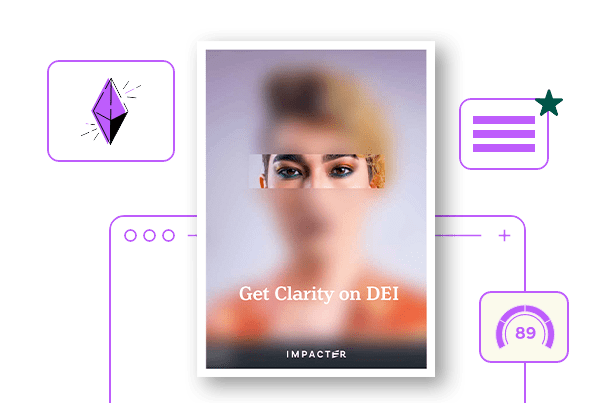The risk of being caught out doing things wrong on Diversity & Inclusion in the workplace is expected to increase in the years ahead.
And if you think that this is something that applies only big business, then think about because it matters to individuals, particularly those managing a team – no matter how big or small.
This means that in order to get things right, you’ve also got to know what to avoid in the first place!
We have seen a number of global companies named and shamed for claiming to be something they are not, such as Volkswagen, Walmart or the aviation and fossil fuel industries.

Earlier this year, the Australian Securities and Investments Commission put domestic companies on notice that it will take action against those misleading customers on social and environmental issues.
ASIC alleged Mercer Superannuation, which oversees $27.5 billion in assets, misled members of its Sustainable Plus fund by claiming it excluded companies that were involved in carbon intensive fossil fuels but then heavily invested in 15 stocks from the sector including AGL Energy, BHP, Glencore and Whitehaven Coal.
The Australian Financial Review reported that ASIC deputy chairwoman Sarah Court warned the regulator “would certainly expect more actions,” as a result of its increased focus on greenwashing – which is a term used to describe false claims made about environmental issues.
How to get Diversity & Inclusion in the workplace right and what to avoid!
-
Tokenism. “We hired a woman in our leadership team therefore we are gender diverse!” This work is not about just doing one single thing to check the box and say, “Okay we did it.” There is no simple box to check when it comes to DEI. It’s important for companies to adopt a genuine comprehensive, ever-progressing mentality and take action around building inclusivity in their organization. That does include an intention to hire a more diverse workforce, and there are also many other ways that companies can make honuoring and seeking diversity of background, thought, abilities, personalities, and strengths a priority. This work is not just about visual diversity, it is also about equity and inclusion.
-
Marketing/PR: DEI is not just an opportunity for brands to capitalize on for profits with a superficial show of support towards social or environmental issues. For example, International Women’s Day is a prime example when companies promote gender diversity and equality within their workforces. And for some they are doing well and deserve to do this, but for others I have seen their support for women’s issues be that financial literacy (prime example) or leadership are really very questionable. Indeed I recall one conversation with an employee of one of the country’s banks (who shall remain nameless) telling me that their DEI group was really nothing more than a social events group and that they discussed nothing on how to embrace diversity in its broadest forms.
-
Take genuine action: A lot of companies commit to supporting one initiative, or doing one-off training and and event without any self reflection. It’s essentially just ticking that box. For change to be genuinely progressive, it must be reviewed, tweaked and sustained. If you tried something and brought in a consultant to map out a plan, then try to stick with it.
Don’t be scared of changing tact on Diversity & Inclusion if it isn’t working.
This is a big one. I read a great article by the Harvard Business Review the other day which noted that companies should really lean into A/B testing DEI strategies and practices before they commit to them long term. You want to know that what you are buying into is effective. This is something that we are big on with the Impacter is using the process to grow, take action and see how it affects your business performance and if it doesn’t work, try another action, track it, measure it and review. If it works great, lock it in, and if it doesn’t don’t give up. Don’t be scared to look critically at your policies, procedures, and company culture.
- Value the change you are making: For change to be sustainable it’s important that it is viewed as meaningful. This is where company culture is so important because if you have team members who just don’t buy into your strategies or the company’s vision to achieve a diverse workforce, achieving your desired goals can be a real drag. So the goal must be meaningful to all those involved and valued so that they see the purpose in integrating it.
- Ask questions & be vulnerable. This one is important because too often do leaders think they need to know it all. The truth is that embracing diversity and inclusion is an evolving space with new ideas all the time. So lean into the fact that you don’t know it all and ask more questions about how you get there. As long as you are willing to genuinely prioritize diversity and inclusion and take action towards creating a better working environment then you are playing a role in the bigger picture. And share your lessons and failings along the way because they might just help others to open up too.
- Listen to your employees and key people. Now businesses can and do pay consultants 10s of thousands of dollars to consult once in a year or 2 or 3 audits their staff to find out whether they are happy, whether they feel the love on diversity and inclusion. But this is something that should be happening on a regular basis, why? because leaders need to listen to what’s working and what’s not and be accountable for that. Again the Impacter allows organisations to survey their staff once a quarter and in line with WGEA sample expectations.
Subscribe here to the Financy newsletter to receive articles on gender finance, diversity and inclusion at work, as well as ESG issues, plus the Financy Women’s Index quarterly report.













